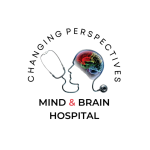
While awareness of mental health and the importance of psychology is growing across the globe, therapy as we know it today is not without its limitations. One such limitation stems from the fact that the major acknowledged contributors to our understanding of the human psyche have been predominantly from the Western world. As a result, for decades, the study of psychology and implementation of therapy has moved with an expectation that all people be able to fit into the Western, Eurocentric views of the human experience and disregarded indigenous cultures, beliefs and practices, including those concerning spirituality and religion.
This shunning of spirituality and religion was exacerbated by many of the Western thinkers in psychology having been highly critical of the existence, need and benefits of such faith systems. However, most Eastern indigenous traditions and belief systems contain within them an enormous wealth of knowledge beneficial to the well-being of individuals and communities that was left unacknowledged.

The imposition of a purely western approach on the therapeutic spaces of those from the eastern world, isolated those individuals whose faith and cultural practices were part and parcel of their lives and understanding of themselves, their environment and their experiences. These individuals, therefore, either stayed away from therapy, as it appeared contradictory and invalidating of their views, or sought help from a system that did not fully understand their difficulties or make an effort to address them in a way that could feel truly meaningful and beneficial for them.
The mental health care system has, over the years, evolved to consider not just the biological and psychological aspects of wellbeing, but also the social, and the latest addition being the spiritual aspects of wellbeing. This is now referred to as the bio-psycho-socio-spiritual approach in attending to the ailments of the human mind. This has manifested as the integration of existing psychotherapeutic interventions with the beliefs and practices of individuals from other cultures, in an effort to be truly representative of marginalized communities.

While this has helped in tackling stigma and bridging the gap between the person and the therapy, there still exists a need to understand what spiritual therapy is and is not. A few common myths about spiritually integrated psychotherapy are discussed here:
Myths & Reality:
Myth #1: It replaces traditional therapy.
Reality: Spiritually Integrated Therapy complements traditional therapy by incorporating a client’s spiritual beliefs and practices into the therapeutic process. Many existing therapeutic approaches and techniques have been adapted to various cultural and religious groups, such as CBT, narrative therapy and humanistic therapies.
Myth #2: It is not scientific or backed by research.
Reality: Extensive research has shown the efficacy of spiritually integrated psychotherapy, as it addresses the barriers faced by those belonging to other cultural groups in seeking and benefiting from therapy. Research has reported greater treatment adherence and lower drop-out rates for spiritually integrated therapy than standard psychotherapy among such cultural groups.
Myth #3: It imposes dogma on clients to address psychological struggles.
Reality: SIP is not about enforcing dogma against the client’s will, but about collaboratively leveraging beneficial aspects of the beliefs and practices of the client to enhance the therapeutic process.
Currently, the American Psychological Association has approved many spiritually integrated psychotherapies, including the TIIP, which stands for Traditional Islamically Integrated Psychotherapy, which is among many therapies offered at The Mind and Brain Hospital.
Speaking to Zulekha Shakoor Rajani, Counselling psychologist and Co-Head of the department of Islamic Psychology, Research & Training at The Mind and Brain Hospital, she elaborates on the monumental nature of such a service:
“To witness the birth of the first Department of Islamic Psychology in a clinical setup like The Mind and Brain Hospital is not just a professional milestone, it is a quiet, dignified celebration of something long overdue. For too long, therapy has leaned into models that prioritized cognition and behavior, while often leaving behind the soul. But healing is not whole unless it holds the spiritual.”
She goes on to shed light on the heart of this approach to therapy:
“In this department, we don’t see spirituality as an ‘add-on.’ We see it as central, not in dogma, but in dignity. It’s in the way we sit with people’s pain, make room for their values, and honour their connection to the Divine. It’s in using language that is familiar to their hearts and frameworks that are congruent with their lives. This department is about re-humanizing mental health care. It is about saying that your faith, your culture, your worldview, they are not barriers to healing, they are bridges. As a team, we are learning every day. But what gives us hope is knowing that our clients now have a space where they can speak not just as patients, but as people. Where their soul is not overlooked in the name of science, but respected, understood, and slowly restored. Let’s make psychology the study of the soul again.”
Surely, the field of psychotherapy is growing, and with it, so are those who seek it, in ways that encourage curiosity, highlight our interconnectedness and result in lasting change.
Hope this article has deepened your understanding of spiritually integrated psychotherapy and addressed common questions regarding it.
Thank you for reading!

